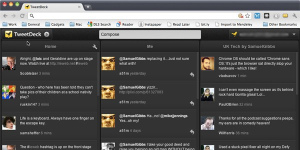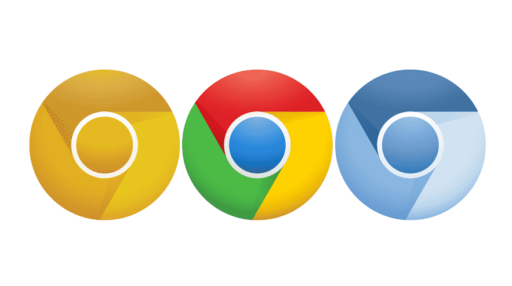In the Digital in 2017 Global Overview by Hootsuite and We Are Social, findings show the speed in growth by which people consume the Internet. It is proof that it is changing the lives of everyone across the globe through the need to connect.

https://pixabay.com/en/laptop-woman-coffee-breakfast-943559/
Let’s take a look at the key numbers in the study:
- 3.77 billion global internet users in 2017
- 2.80 billion global social media users in 2017
- 4.92 billion global mobile users in 2017
- 2.56 billion global mobile social media users in 2017
- 1.61 billion global e-commerce users in 2017
Tying this to the IoT global market size forecast of $185.9 Billion, it’s no wonder data centres needed to increase Gbps from 40 to 100, and soon, 400 Gbps. But with all these numbers, how does it affect the end-users and how should businesses meet consumers’ propensity for the interconnected life?
Each country has varying internet access penetration. This is, of course made possible by infrastructure country by country. With Internet considered as a basic need, countries and vendors vie for attention from consumers who want to stay connected, not just for business.
With that, let’s look at how vendors in countries attract users through pricing model schemes.
US Average Broadband Pricing
In June of 2016, internet broadband users in the US hit a milestone, reaching an average download speeds of 54.97 Mbps. This is according to Speedtest performance tests from January to June. In terms of performance, Verizon Wireless and T-Mobile resulted in similar download speeds.
On the other hand, pricing schemes differ from each ISP. In a comparison done by Top Ten Reviews, metrics include price, performance, service details and extra services and support options, Comcast takes the gold with a maximum download speed of 150 Mbps from a USD 29.99 to USD 49.99 pricing plans. Let’s looks at how the rest fared.
- Time Warner – 50 Mbps from USD 14.99 to USD 64.99 price offers
- Verizon – 500 Mbps from USD 19.99 to USD 274.99 price offers
- At&T – 45 Mbps from USD 29.95 to USD 59.00 price offers
- Cox – 150 Mbps from USD 39.99 to USD 79.99
US is still more expensive compared to UK price points but compare better than other countries in the Asia Pacific.
UK Broadband Pricing
Meanwhile, UK’s broadband pricing is lower than that of the US. The leading ISPs are Sky, BT, Plusnet and Talktalk offering contracts that range from 12 to 18 months. TechRadar lists prices on the top ISPs in the UK.
Sky Broadband is £18.99 per month for new users with a 12-month lock deal with unlimited connection offer. In addition to the monthly package, Sky also offers add-ons for those with existing Sky TV and an online sign-up option freebie.
BT on the other hand, currently offers a unlimited packaged that go for £29.99 per month on an annual deal plus an incentive of £125 MasterCard BT Reward Plus Card. But here’s the most enticing part, it’s 52 Mbps of fibre connection.
But while BT and Sky are using incentives and rewards, Plusnet is offering discounted broadband for 18 months on its Plusnet Unlimited. Its other enticing offers are for Fibre at £32.50 if chosen with line rental.
Talktalk is banking on consumers’ love for television. Its £22.95 per month fast broadband comes with a TV box that’s powered by YouView.
UK internet companies have been receiving funding to improve internet speed in the country. Internet speed is only going to get better with Eastern region already seeing a high percentage improvement.
EU Broadband Price Overview
There are 28 EU member states plus other countries out of the geographical area, with 637 Million Internet users. In a Broadband Internet Access Cost (BIAC) study by Digital Single Market in October 2015, only a few countries offer cheap prices whether these are standalone offers or bundled packages. Namely, only Poland, Bulgaria, France and Lithuania are in the lowest clusters.
On the other hand, countries that came out as expensive on all pricing schemes are Belgium, Croatia, Cyprus, Ireland, Italy, Malta and Spain.
Asia Pacific Broadband Price Overview
While EU and US have issues on pricing, Asia Pacific (APAC) have very good offers in terms of price for performance. Internet users in APAC increase 15% year on year. In addition, APAC has the highest number of broadband mobile users unlike any other region.
With that, the National Broadband plans in the Asia Pacific is seen to support economic growth. Although internet access penetration is lower in this region compared to other developed countries, national broadband remains a priority, which includes speed and fibre optic adoption.
Australia leads in fibre optic adoption followed closely by New Zealand. New Zealand’s National Broadband project which aims to be 84% fibre optic connected in 2024 spurs the growth and improvement in speed. With this, the offers for cheap broadband in New Zealand are as appealing as ever. Offers are as low as NZD79 for Ultra-Fast broadband with no data capping, throttles or frills.
The Connected Consumer
With the Internet of Things (IoT) changing the way people live, residential broadband is spurred by streaming video activities. In 2018, broadband bandwidth will be because of the connected TVs according to ACG Research in their 5-year projection. Vendors need to step up to meet this trend.
The rise of video even in social media is another reason why consumers demand for faster speeds but lower rates. The video trend is just starting.




US cable providers are one the Most HATED types of companies in America.
The bastard companies keep raising rates while offering Nothing much in return including poor customer service and keep playing the Frigging game of Possibly offering ‘better’ packages ONLY when people try to cancel their cable services! F Them!
If they were true to their word, which they are NOT, about customer service, then lower the rates once the term agreements expired instead of playing the Friggin game of cancellation then offer a ‘better’ package!
In particular, FU Comcast! FU cable companies for NOT expanding into many locations so there’s No friggin competition esp. in Rural areas!!!
FU!